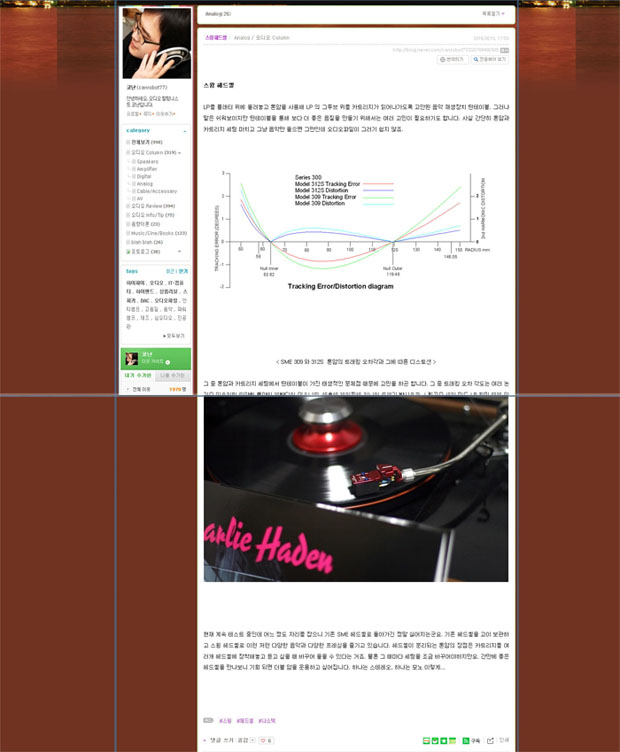Nasotec Swing Headshell
 Conan Lee, HiFi Audio Reviewer
Conan Lee, HiFi Audio Reviewer
By putting LP on the platter and using the tonearm, a turntable is made in a way that the groove of the LP is read on the cartridge. It is easy to say everything, but we have to overcome various struggles in order to produce better sound quality through the turntable. Honestly, after setting tonearm and cartridge, you just have to listen to the music, but audiophiles do not do so. |
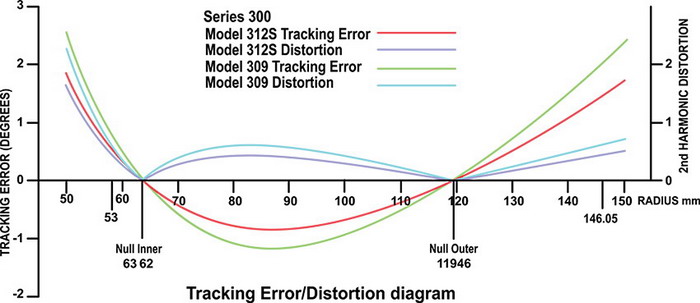
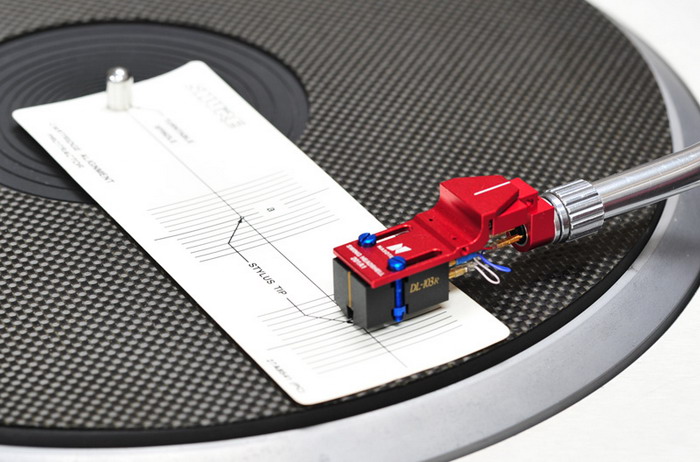
We struggle because of the innate problem that a turntable has with tonearm and cartridge setting. Among all these,
tracking error angle creates various troubles and as a solution different types of tonearm were created. Primarily in a
rotating lacquer record disk, a cutting machine moves from the outside to the inside straightly and creating the groove,
but when playing the groove, the normal tonearms turn on a pivot. Because of this, even if you set cartridge offset and
overhang accurately, the cartridge cannot track the groove straightly.

[Clearaudio linear tonearm]
Theoretically speaking, as you see in the diagram above, the cartridge can be set in a straight at only two points.
Therefore, when you look at the cartridge alignment protractors, two points are found to set the cartridge alignment. To
solve this problem, some of the highend tonearm makers created linear tracking tonearm. Clearaudio, Kuzma are
examples of the created linear tracking tonearms. Preferring long arms over short arms out of normal tonearms is because
long arms can easily reduce tracking error angle.
However, linear tracking tonearm is not proficient in every aspect. Therefore, it also has a lot of problems. Theoretically
close is the tonearm of the Thales. It is constructed in the structure of the dual shaft, so tracking angle can be changed
through the movement of the tonearm. By looking at the Thales Simplicity, the angular difference between the tonearm
shaft and the headshell due to the swing angle of the tonearm, you will get to understand it much better.

[Thales tonearm]
Swing Headshell is created to lessen the tracking error angle and to improve tracking ability. It was originally created in
Nasotec and it shows quite excellent effect. Basically, Swing Headshell is created in a way that the swing head can move
left and right softly. Furthermore, the tracking error angle is naturally revised by the inertia of the rotating LP that moves
the groove. It is hard to prove everything theoretically, but if you get a chance to use it, you will definitely hear the sound
clearly that even reaches to the very inside of the LP groove. The balance of the swing and the tension of the spring can be
controlled by tightening or loosening the spring at the back of the headshell.
At the end of the spring, there is a bearing ball. This bearing ball has a crucial role. It helps absorb the vibration made when
cartridge reads the groove. Additionally, swing headshell has the function of lessening the tracking error angle and also
minimizes the arm resonance.
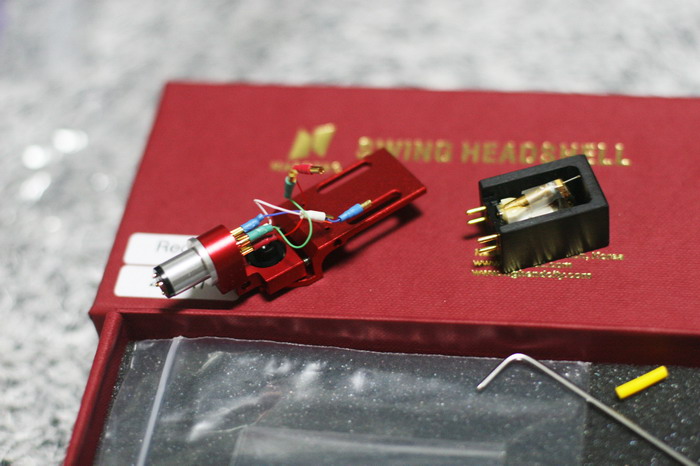
I have summarized the results that came out by using it for a month. I tested SME 3010R tonearm and DL103R mpingo
version on the VPI turntable.
*Sound Quality
1. It does not affect the overall tonal balance.
2. Accuracy of tracking error angle cannot be provided, but the difference of sound quality is apparent.
- Smooth connection in the entire frequency range.
- Abundant harmony and natural reverberation.
- High pitch becomes detailed and silky.
- Whole tone of saxophone and trumpet becomes abundant, so the impression of the space seems to be bigger than other headshells.
- Compared to a firm bass, it is a little bit softer and becomes more abundant.
*Usability/ Design
1. Managing the rear spring tension is a little uncomfortable because of the fingerlift.
2. There is no standard tension management, so it should be repeated for several times to find the best tension.
3. The effect of tracking ability differs by the way lead wire is formed.
4. Satisfaction of design seems to be good.
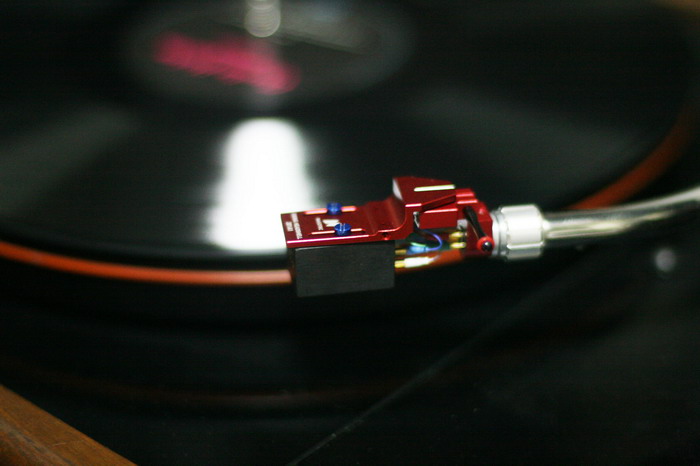
*Conclusion
- Besides the effect of lessening the tracking error angle, the decreasing effect of tonearm vibration cannot be ignored.
- Setup should be more detailed for abundant sound quality than it originally is.
- When headshell changed, tracking force and anti-skating must be re-controlled.
- If lead wires get tangled, it results into the disturbance of the movement of headshell. Therefore, simple setup should be found to not
make lead wires tangled.
- If used together with HiFistay clamp, synergy becomes bigger.
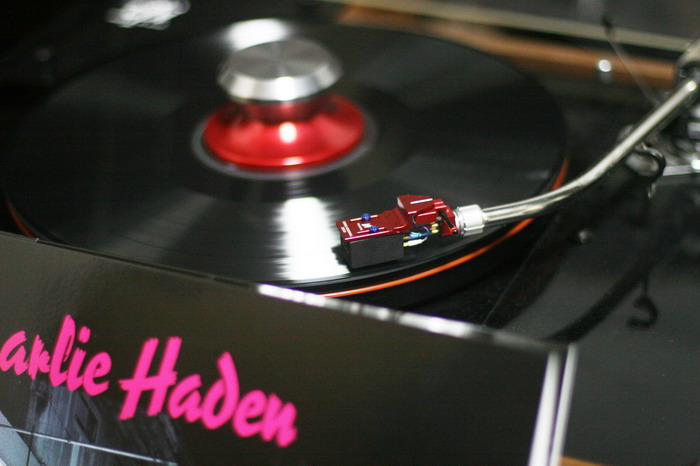
I am still testing, but I am pretty sure that once I get some positive results, I do not want to get back to the original SME
headshell. I have preserved my original headshell and have tried various music with Swing headshell and vinyl pressings.
The merit of universal type tonearm is that the cartridge can be equipped with different types of headshells and can
listen to the music whenever wanted. Of course, I have to change settings each time.
Since I have a good headshell which does not happen everyday, I also want to have one more arm if possible, one as
stereo and one as mono.
